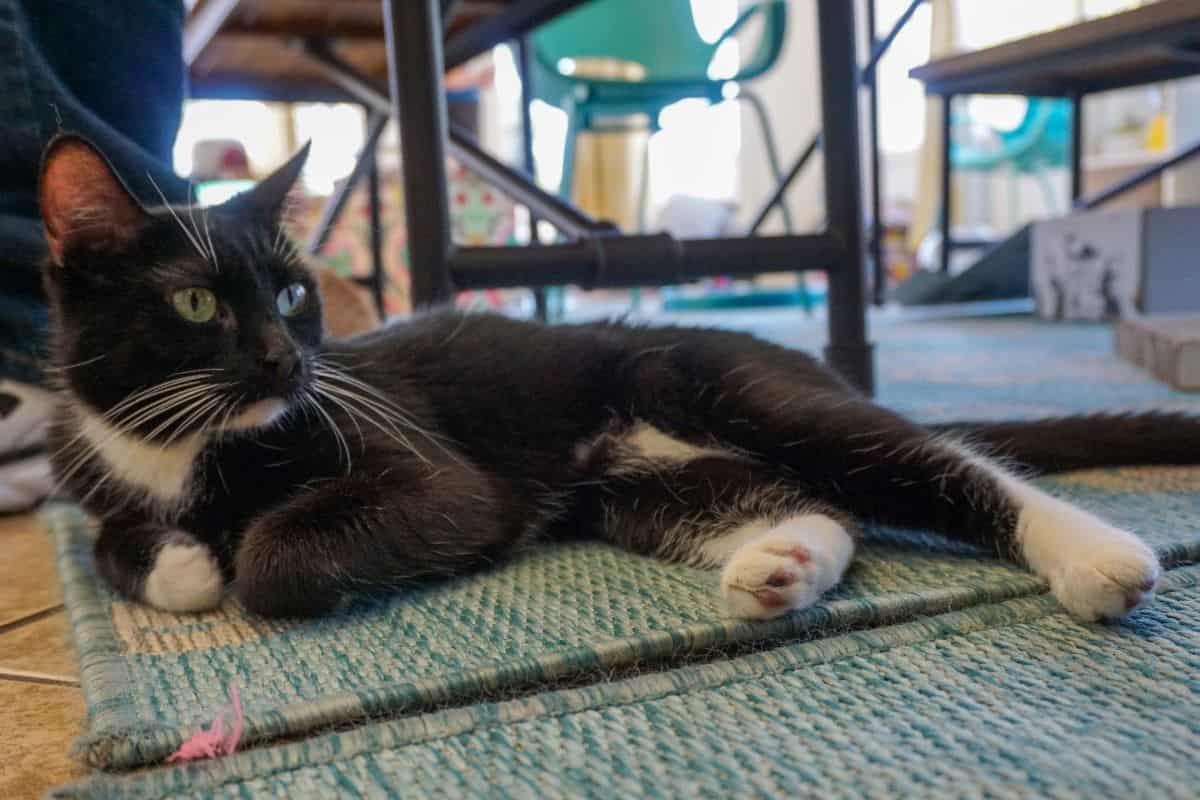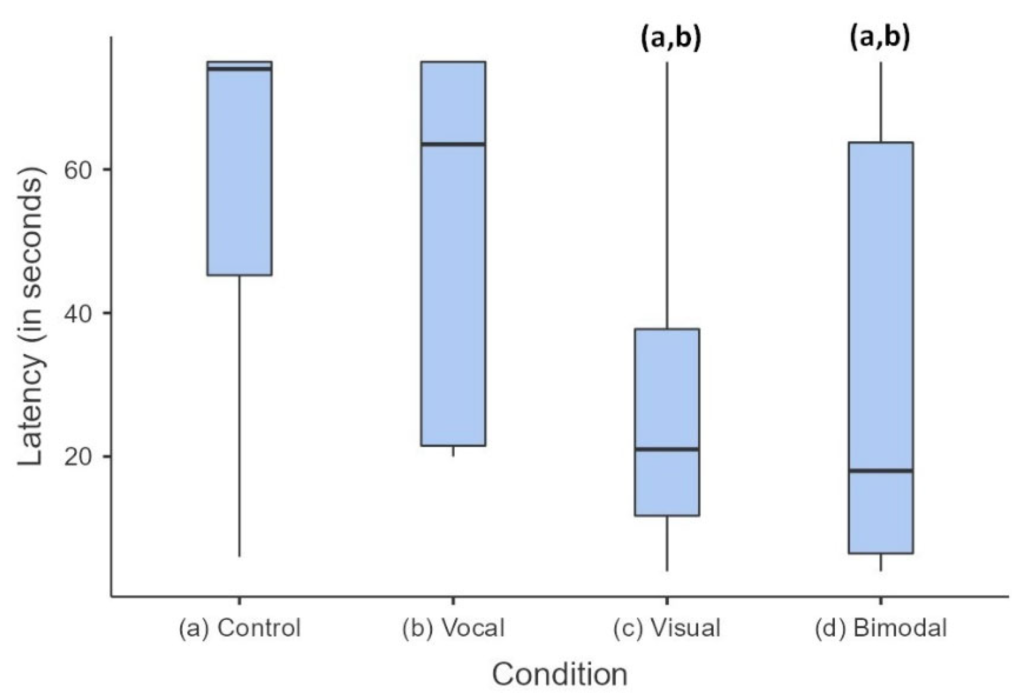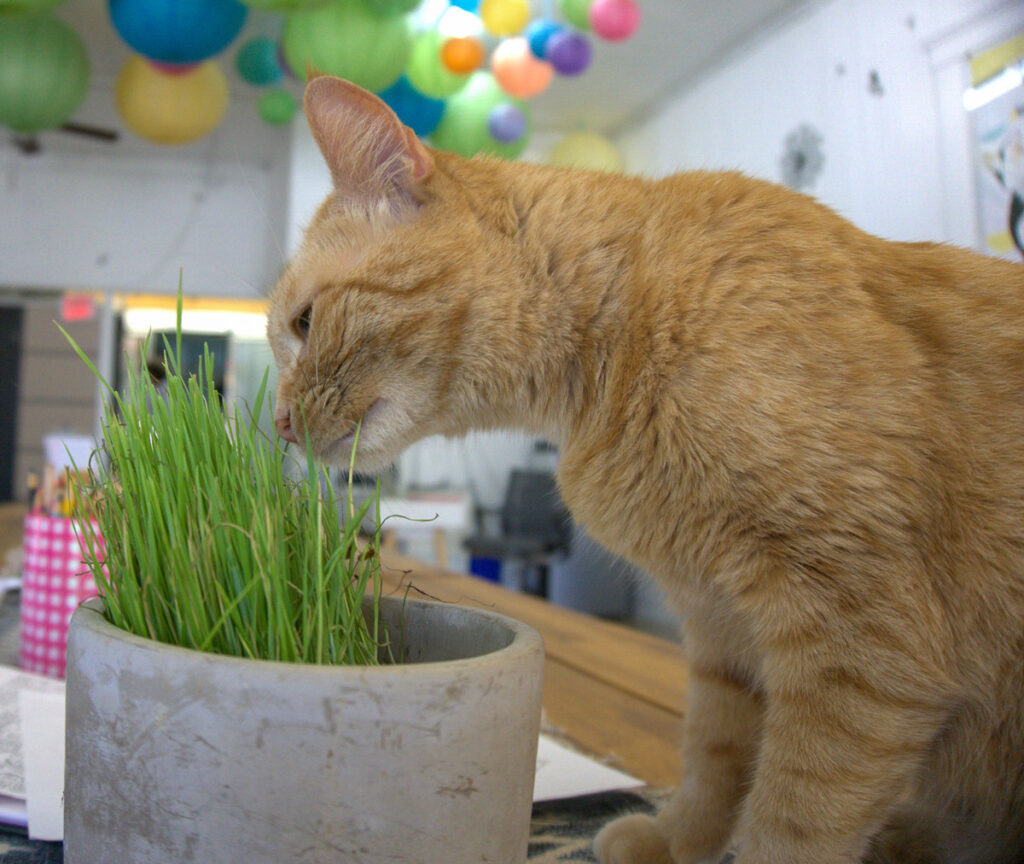How do cats communicate with human strangers? A pair of French researchers went to a cat cafe to see what modes of communication cats responded best to.
Cats, having lived in close proximity to humans for thousands of years, have developed specific ways of communicating with them. For example, adult cats will meow to to humans when they need something but generally not to other cats.
In turn, cats have also evolved to understand how humans tend to communicate with them. Cats will read body language and a person’s tone to interpret their intentions towards them. Cats can also understand why a person is pointing and turn their attention in that direction.
Cats are able able to recognize faces and learn the voices of their owners.
How cats respond to communication attempts by a stranger
To look at how cats react to strangers attempting to communicate with them, the researchers recorded the response of 12 cats (six males and six females) in two different cat cafes where these cats were residents of.
The cat communication study was done in the early mornings before the cafes were opened up to the general public.
Modes of communication were broken up into three types: sound, visual, or both.

To test the response of each cat to the three modes of communication, the cat was brought into a room where the researcher was. While sitting in a chair 3.5 meters (about 11.4 feet) away the researcher would either call to the cat, gesture, call and gesture, or do nothing.
The response and time it took for the cat to respond was then recorded. Each of the 12 cats spent time in the room under the four different styles of communication.
Cats respond best to both visual and vocal cues
In this small study, the researchers found that both calling and gesturing illicit the fasted and most responsive reaction by the cats.
When the person in the cat cafe both called and gestured, the cats in the study approached the person the fastest. The second fastest respond was visual communication (often in the form of slow blinking at the cat) which cats interpret positively.

No human communication makes cats uncomfortable
The researchers also observed how cats reacted when the human in the room made no attempts to communicate. What they found was that when the person made no attempt at all to communicate, this appeared to make the cat uncomfortable. The most outward sign of that discomfort was tail wagging, which cats tend to do when they are agitated.

Tail wagging by the cat when the person in the room did not communicate was about 14 seconds on average compared to less than 0.4 seconds when the person call and gestured to the cat.
Vocal communication only also generated a higher duration of cat tail wagging (about 11 seconds) compared to visual or both visual and communication communication.
References
De Mouzon, C., Gilbert, C., Di-Stasi, R., & Leboucher, G. (2022). How’s my kitty? Acoustic parameters of cat-directed speech in human-cat interactions. Behavioural Processes, 203, 104755. DOI: 10.1016/j.beproc.2022.104755
De Mouzon, C., & Leboucher, G. (2023). Multimodal communication in the human–cat relationship: a pilot study. Animals, 13(9), 1528. DOI: 10.3390/ani13091528







